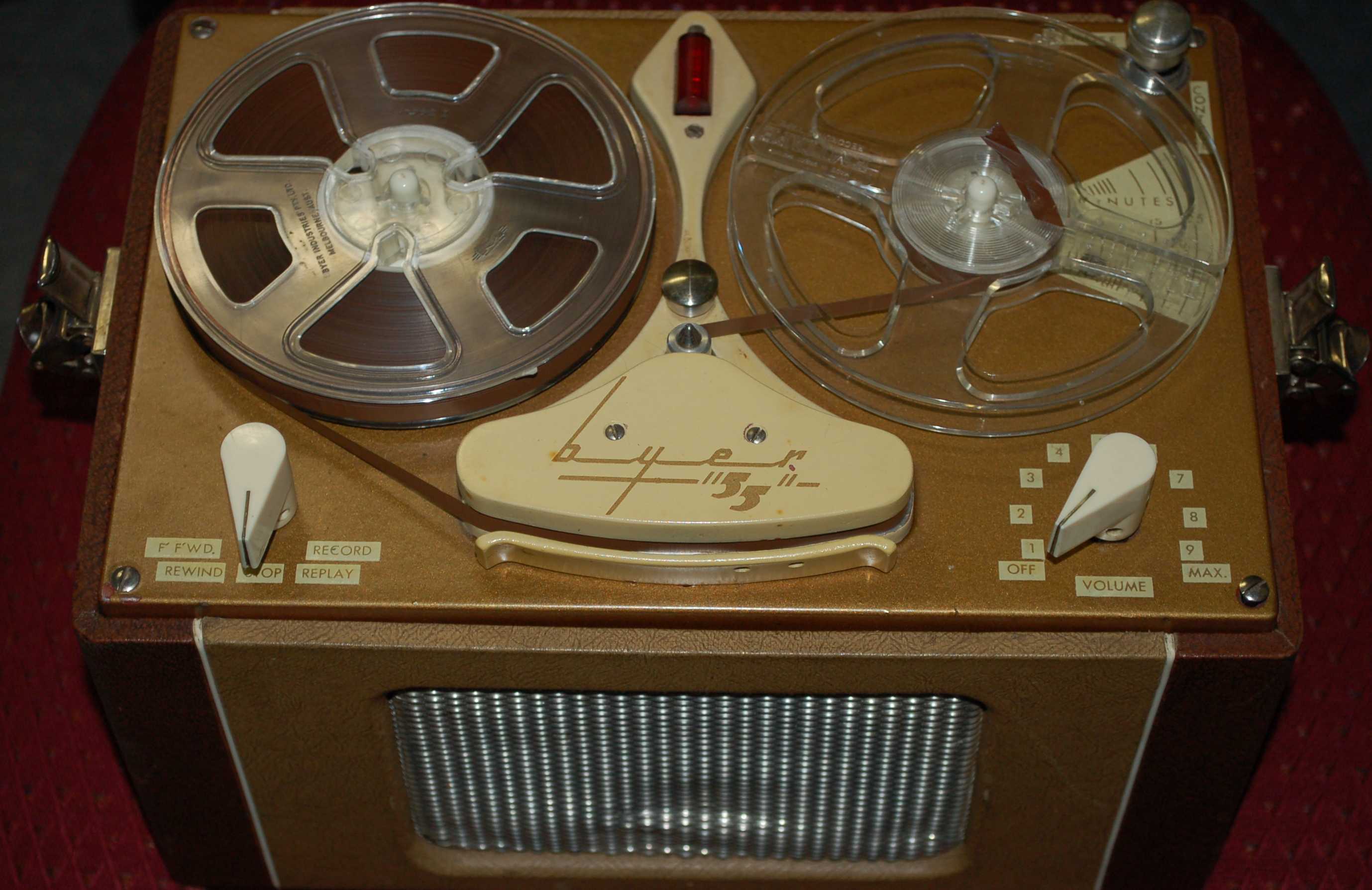
The Byer "55" is believed to be the first the first Australian designed and manufactured self-contained tape recorder intended for non-professional use (1953). The maximum spool size which can be used is limited to 5in. but this is not a problem as the single tape speed is set to 3 3/4 ips so that a good compromise between playing time and high frequency response is achieved. While this tape recorder was designed to be portable it does, however, require mains power to run. Portability was one of the important features promoted in the advertising literature, 'The Byer "55" is TRULY PORTABLE because of its light weight and small size -- only 12in x 7 3/4in x 8in high. A completely self-contained unit.' The 'light weight' to which they referred was 18 lbs!!
Simple operating controls were incorporated in the Byer "55", the function switch on the left side of the panel has five positions: FAST FORWARD, REWIND, STOP, REPLAY, and RECORD. On the right hand side is volume control with integral mains power switch, this control allows the operator to set both recording and replay levels.
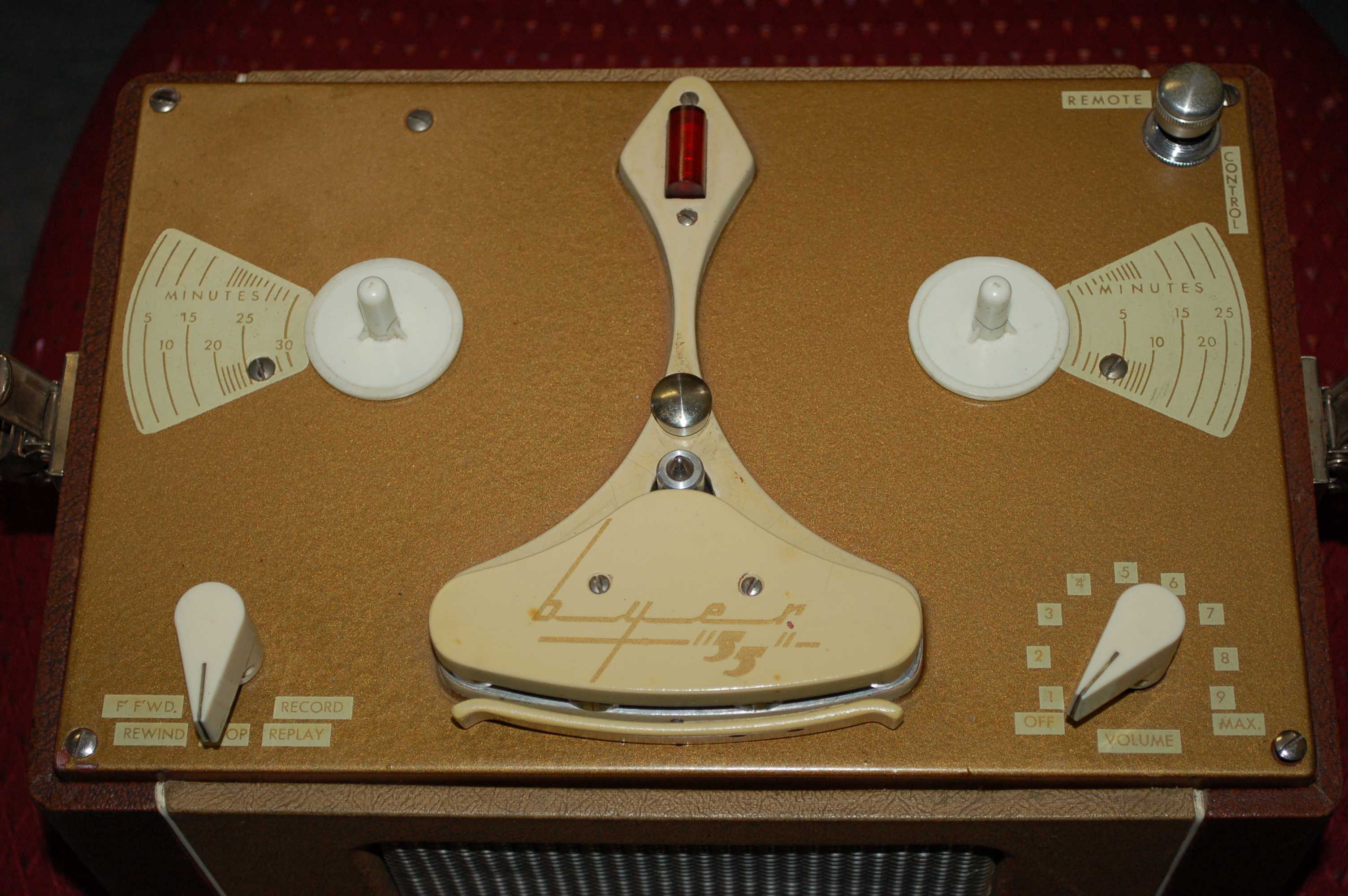
In this picture the tape spools have been removed so you can see the playing time measurement labels on the deck, a feature which was used on video cassette tapes. In the rear right hand corner of the deck is a remote control socket. When the Byer "55" is in RECORD or REPLAY mode the tape motion can stopped or started by opening or closing a switch connected to this two pin socket. A foot switch was available as an option to connect to the remote control socket.
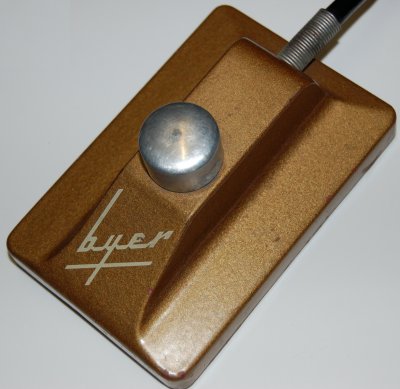
Two phone jacks are located on the right hand side of the tape recorder, one is for connection to a crystal microphone, crystal pick-up (record player), or radio tuner while the other socket allows connection of an external loud speaker or headphones. The microphone is shown below.
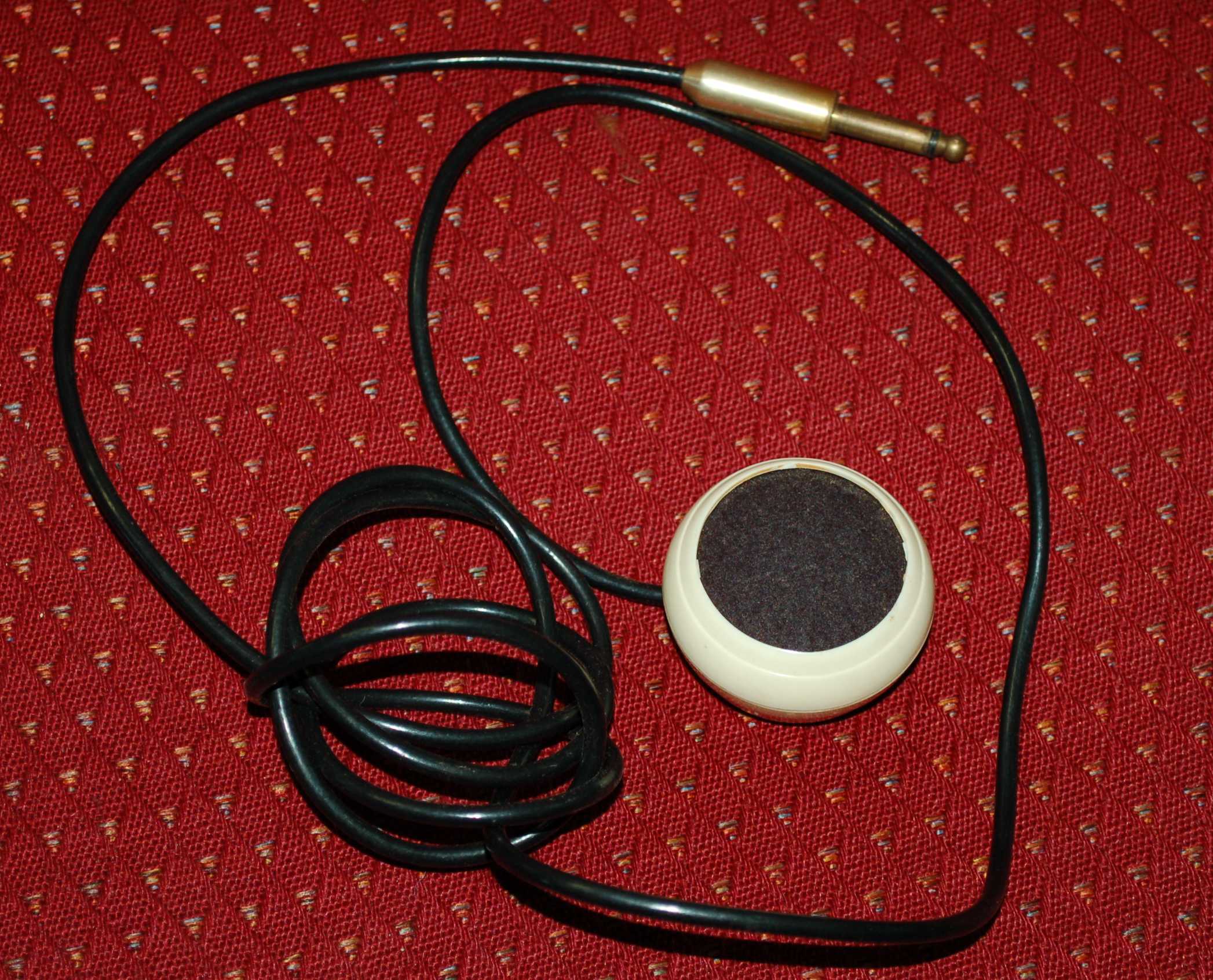
One of the accessories that came with Byer 55 was a vinyl carry bag only one of the Byer 55's in my collection came with the original carry bag. It is quite possible that these carry bags are quite rare.
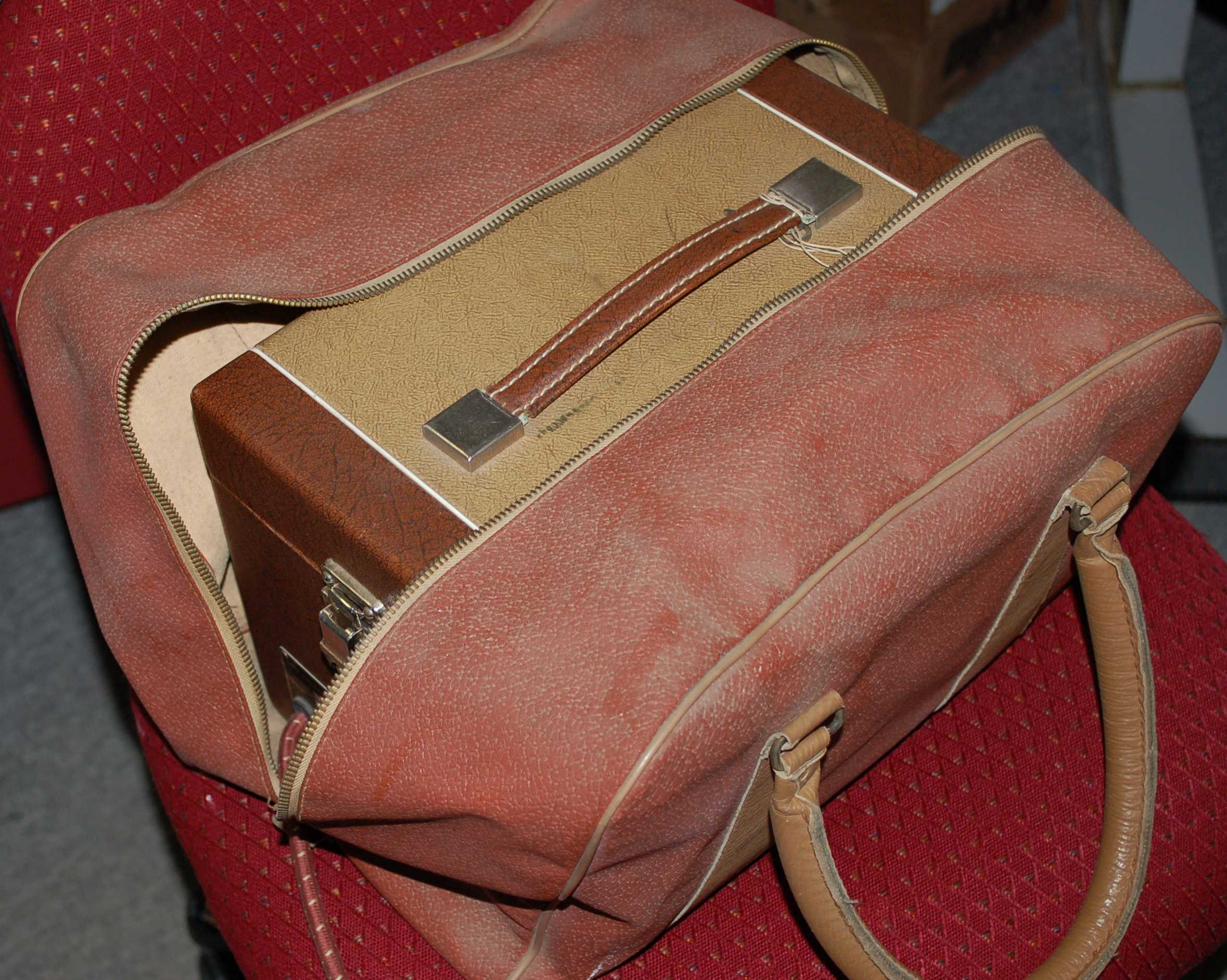
The image below shows the Byer 55 removed from its case.
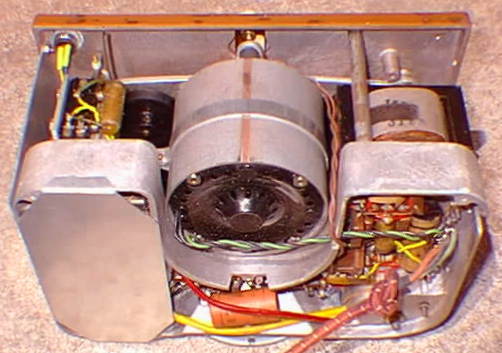
This view is of the main drive motor and part of the chassis. Mechanically this tape recorder is very interesting as there is only one drive belt, all other energy transfer from the motor is by friction drive of two wheels being brought together. Starting with the capstan, this shaft is the axle for a wheel approximately 4" in diameter, rim of the wheel has a rubber edge. Depending on the position of the mechanical linkages from the function switch the spool hubs and pinch roller shift sideways to engage or disengage giving the required function. The motor is fixed to standard rubber shock mounts to reduce vibration but there is a more important reason for this mounting, there is a solenoid which engages the motor shaft with the edge of the capstan wheel in all modes except STOP. Further, the motor will disengage when the power is turned off even if the function control is not set to STOP. This feature ensures that a flat will not develop on the rubber rim.
The tube complement of the Byer "55" pictured here is: 1 x 6AQ5, 2 x 6AU6, 1 6X4, and 1 x N78. Both the advertising brochure and Operating instructions list x 6AU6, 1 6X4, and 1 x 6BJ5 (N78?), but no 6AQ5. The circuit schematic shows five not four valves so maybe the 6AQ5 was missed when the manual and advertising was prepared.
Jack Richardson (Byer factory foreman) said that the Byer "55" was "a bit of a nightmare" to service. I can do nothing but agree with this statement. To make this unit operational I had to re-fit the spool drive belt this involved removing the loudspeaker to gain access to the belt but first I had to remove a capacitor the get access to the loudspeaker mounting screws then the lead wires to the speaker had to be de-soldered as they were too short to allow reasonable movement to the speaker. In fact, when the N78 output tube needs replacing the same procedure will have to be followed just to gain access to the tube.
The advertising brochure states: "The standard Byer "55" operates at 3 3/4" per second tape speed giving a full half hour recording on a 5" reel of tape - cutting present tape costs in half! Model 55D, with a tape speed 1 7/8" per second, doubles normal recording time - a full hour from a five-inch reel!" The Byer 55D or Byer Dictette was possibly aimed at the office market, allowing letters and general documents to be dictated to tape then later on a typist would type up the document whilst listening to the tape. The slower speed gives one hour recording time and as only speech is being recorded that reduced high frequency response is of little consequence. Having a foot switch to start and stop the tape motion provides hands free operation which is ideal for a typist.
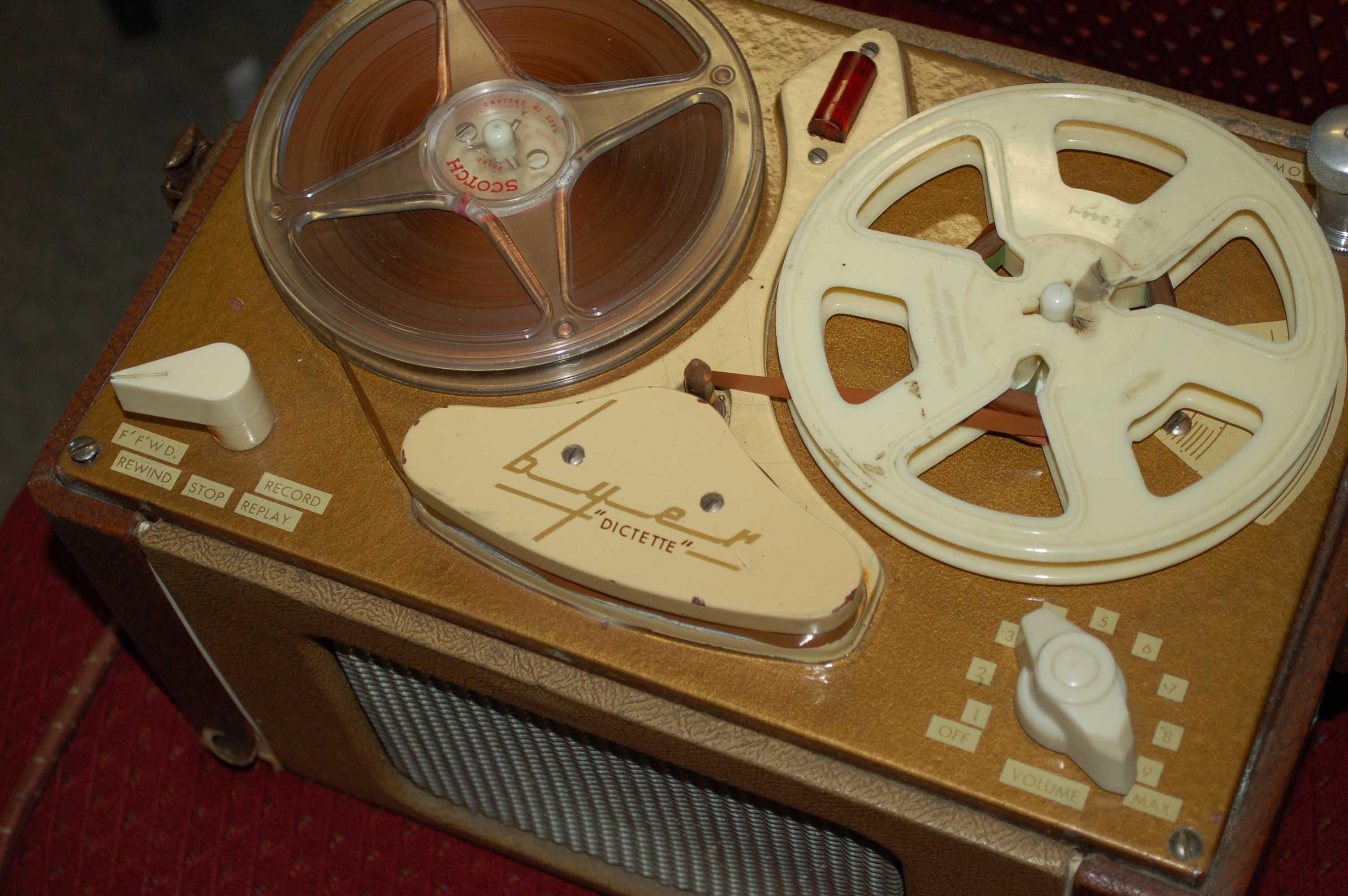
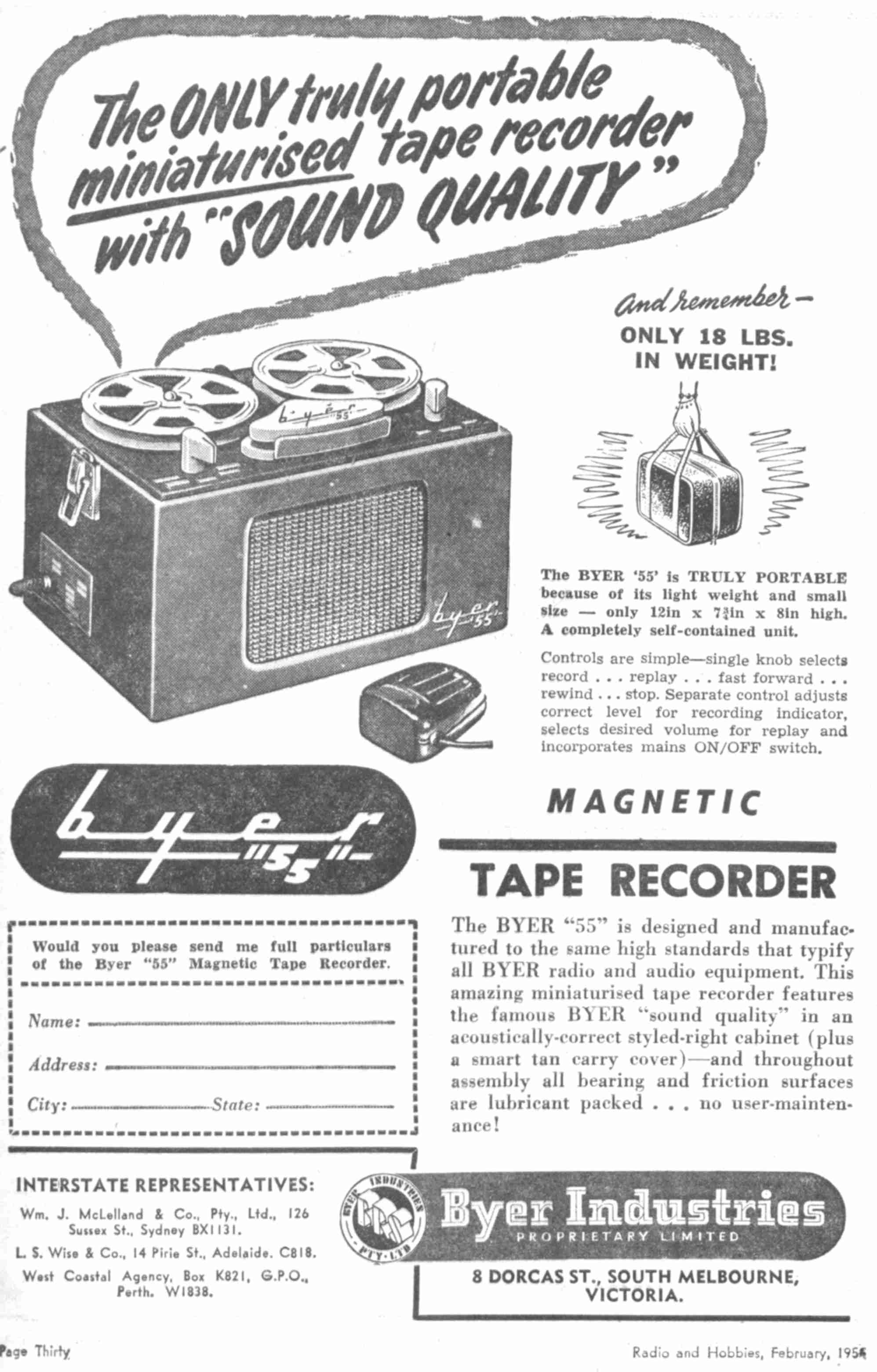
Byer 55 advertisement from Radio & Hobbies, February 1954.
